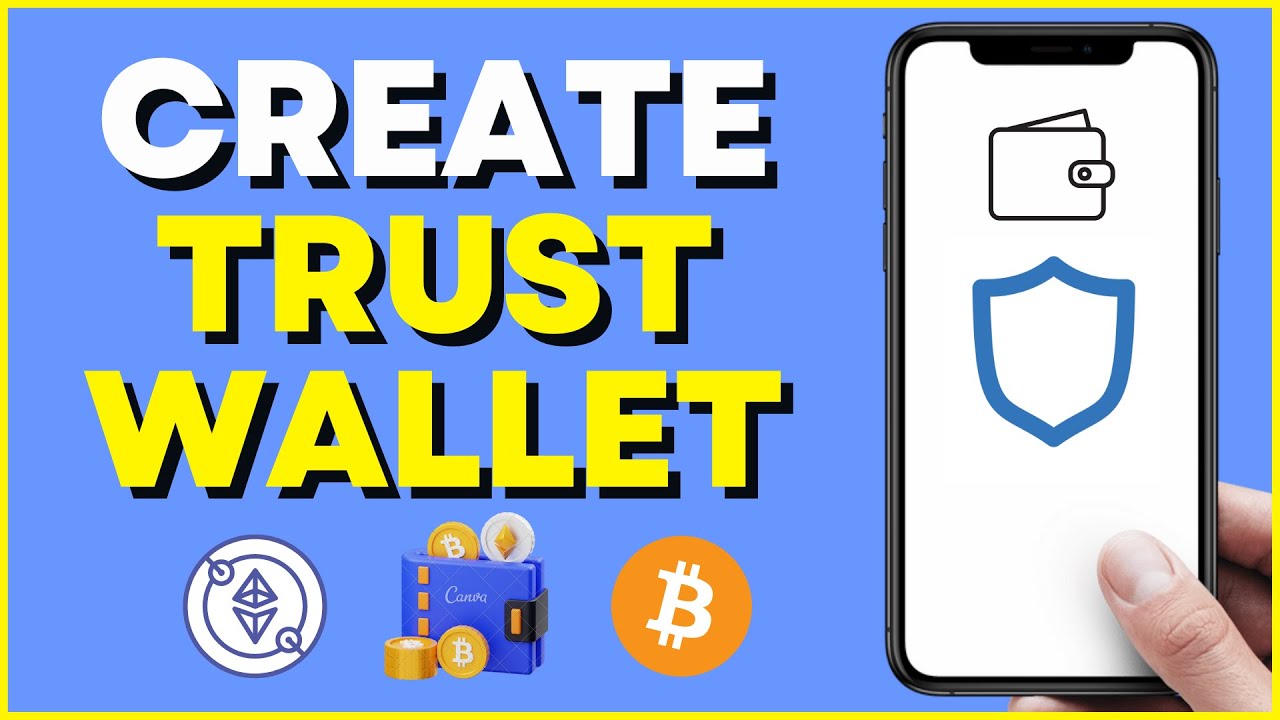To open a Trust Wallet, download the app from the Google Play Store or Apple App Store, launch it, and select “Create a New Wallet.” Agree to the terms, securely note your recovery phrase, and then set a passcode or enable biometric security to complete the setup.

Downloading and Installing Trust Wallet
Choosing the Right Platform
- Compatibility: Trust Wallet is designed for both Android and iOS platforms. Ensure your device’s operating system is compatible and up to date for the best performance.
- Device Requirements: Check your device specifications against Trust Wallet’s requirements. This ensures the app runs smoothly and securely on your smartphone.
Download Process from Official Sources
- Official App Stores: Always download Trust Wallet from official app stores—Google Play Store for Android devices and Apple App Store for iOS devices. This minimizes the risk of installing malicious software.
- Trust Wallet Website: Alternatively, visit the official Trust Wallet website for direct links to the app in the app stores. This ensures you’re downloading the legitimate version of the wallet.
Installation and Initial Setup
- Follow On-Screen Instructions: Once downloaded, open the app and follow the on-screen instructions for installation. The process is straightforward and designed for users of all levels of technical expertise.
- Creating or Importing a Wallet: You’ll have the option to create a new wallet or import an existing one using a recovery phrase. For new users, creating a new wallet is the recommended option.
- Backup Your Recovery Phrase: If creating a new wallet, you’ll be provided with a 12-word recovery phrase. It’s crucial to write this down and store it in a safe place, as it’s the only way to recover your wallet if you lose access to your device.
- Set a Strong Password: Enhance your wallet’s security by setting a strong password or enabling biometric authentication (if supported by your device) during the initial setup.
Creating a New Wallet
Selecting “Create a New Wallet”
- Initial Choice: Upon opening Trust Wallet for the first time, you’ll be presented with the option to either “Create a New Wallet” or “Import a Wallet.” To begin the process of establishing a new wallet, select “Create a New Wallet.”
- Terms of Service Agreement: Before proceeding, you will be prompted to review and accept Trust Wallet’s Terms of Service. It’s important to read these carefully to understand your rights and responsibilities as a user.
Understanding and Saving Your Recovery Phrase
- The Importance of Your Recovery Phrase: After choosing to create a new wallet, Trust Wallet will generate a 12-word recovery phrase. This sequence of words serves as the key to your wallet and its assets. It’s crucial for backup and recovery purposes, should you ever lose access to your device.
- Secure Storage Practices: It is recommended to write down your recovery phrase on paper and store it in a secure location, such as a safe or lockbox. Avoid storing it digitally to prevent unauthorized access through hacking or phishing attempts. Never share your recovery phrase with anyone.

Setting a Strong Password
- Creating a Password: As an additional layer of security, Trust Wallet will prompt you to create a password. This password will be required to access your wallet, perform transactions, and view your recovery phrase within the app.
- Password Strength Recommendations: Choose a strong, unique password that includes a mix of letters, numbers, and special characters. Avoid using easily guessable information, such as birthdays or common words.
- Biometric Authentication: For enhanced security and convenience, consider enabling biometric authentication (such as fingerprint or facial recognition) if your device supports it. This feature adds an extra layer of security and simplifies the process of accessing your wallet.
Importing an Existing Wallet
Options for Wallet Importation
- Recovery Phrase Method: The most common method for importing an existing wallet into Trust Wallet is using a 12-word or 24-word recovery phrase. This phrase was generated when the wallet was initially created and is essential for accessing the funds stored in it.
- Private Key Import: For some cryptocurrencies, Trust Wallet allows the importation of a wallet by entering the private key directly. This method requires the user to have secure access to the private key associated with their cryptocurrency addresses.
- Keystore File: A less common method involves importing a wallet using a keystore file. This method is typically used for Ethereum wallets and requires the user to have a copy of the keystore file and know the password to decrypt it.
Entering Your Recovery Phrase
- Accuracy is Crucial: When importing a wallet using the recovery phrase, it’s imperative to enter the words in the exact order they were originally presented. Even a single mistake can prevent access to the wallet.
- Use the Correct Format: Ensure that you’re using the correct format (12, 18, or 24 words) as required by the wallet you’re importing. Trust Wallet will guide you through this process, indicating which formats are supported.
Securely Storing Backup Information
- Physical Backup: It’s advisable to keep a physical copy of your recovery phrase, private key, or keystore file password stored in a secure location, such as a safe or a lockbox. Consider using waterproof and fireproof materials to protect against environmental damage.
- Digital Security: If you must store this information digitally for convenience, use encrypted storage solutions and ensure that the device or cloud service used has robust security measures in place. Never store your sensitive information in plain text or unsecured locations.
- Avoid Sharing: Never share your recovery phrase, private key, or keystore file with anyone. Trust Wallet or any legitimate service will never ask for this sensitive information. Sharing it can lead to the loss of your assets.
How do I open a Trust Wallet?
Download the Trust Wallet app from the official Apple App Store or Google Play Store, open the app, and then choose to either create a new wallet or import an existing one by following the on-screen instructions.
Can I use Trust Wallet on multiple devices?
Yes, you can use Trust Wallet on multiple devices by using the same recovery phrase to import your wallet onto each device.
Is Trust Wallet free to use?
Yes, Trust Wallet is free to download and use, but network fees apply for transactions like sending cryptocurrencies.
What cryptocurrencies does Trust Wallet support?
Trust Wallet supports a wide range of cryptocurrencies including Bitcoin, Ethereum, Binance Coin, and over 160,000 other assets and tokens.

